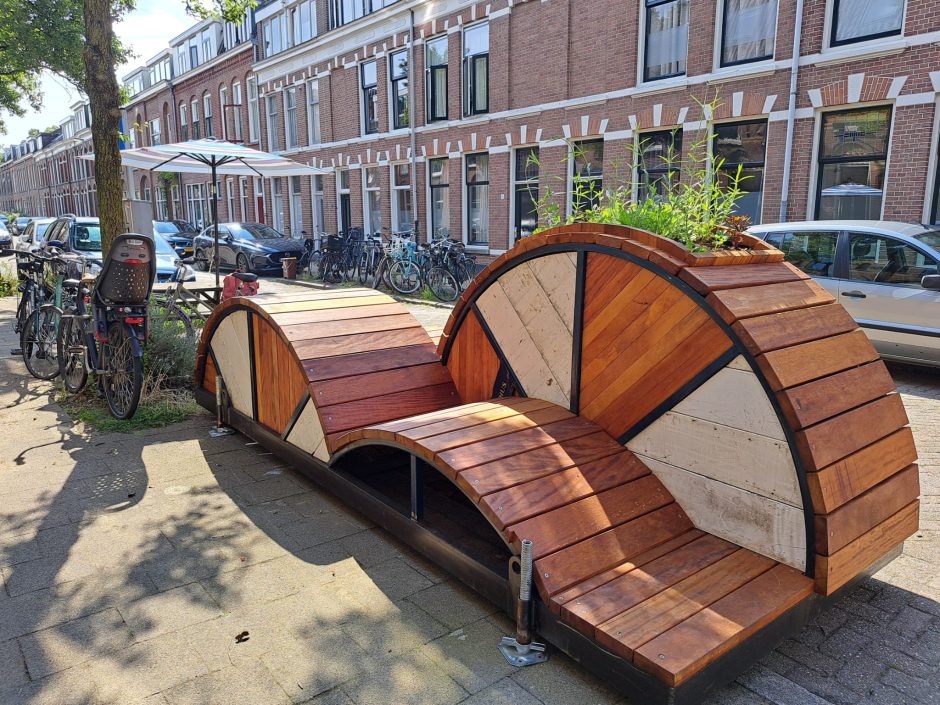Utrecht, The Netherlands: Reimagining car parking spaces to transform public areas
In The News
15 Jan 2025
The fourth-largest city in the Netherlands, Utrecht, increasingly faces challenges due to rapid population growth. It’s projected to welcome more than 100,000 new inhabitants by 2040. Alongside the need for housing is a growing demand for green spaces, presenting a common problem for municipalities of moderate size.
A new project prioritising greenery and community spaces hopes to change Utrecht’s landscape and spark discussions on the future of urban design.
“Transforming Car Parking Spaces: A Pop-Up Public Space Project” aims to create temporary pop-up elements in public spaces (specifically, car parking spaces) to promote a more community-centric approach to urban design. Car spaces will be temporarily repurposed into bike parking zones, green spaces and areas for residents to meet.
This is one of five projects selected for the Sustainable Cities Mobility Challenge, a programme coordinated by EIT Climate-KIC and funded for the second year through the Charities Aid Foundation (CAF) America via a grant from FedEx.
“In many urban areas, the car has long been an overly dominant feature of the landscape. In Utrecht, we want to create more community-oriented environments, which is why it’s essential to reconsider the use of public space,” says Els ten Hulscher, project manager at Utrecht City Council.

A parking space repurposed for communal seating in Utrecht.
The project is aligned with Utrecht’s Spatial Strategy 2040 – where sustainability is at the heart of urban planning decisions – and the city’s Green Leap initiative, which aims to prioritise greening various locations throughout Utrecht.
“We want to enhance 200 hectares with more green space by 2040. We are also in the process of annually transforming around 1 per cent of parking spaces in residential streets into spaces for greenery, recreation, bicycle storage and communal activities, through consultations with residents,” says Els ten Hulscher.
“Utrecht must remain a city for everyone. A city in which everyone can participate. In which houses, public spaces and facilities are available and accessible to everyone.
Utrecht residents feel connected to each other. The entire city is becoming greener and healthier and there will continue to be quiet places in the city.
In the meantime, we ensure that we preserve the character of the city in all developments.”
Utrecht’s Spatial Strategy 2040 vision
The temporary nature of these pop-ups is important, as Els ten Hulscher explains: “Sometimes, we encounter resistance from residents, particularly when the addition of greenery and bicycle parking comes at the expense of car parking spaces. It is essential to manage their requests effectively and build more consensus. Pop-up elements can help change people’s minds regarding a different design and use of public space.”
Utrecht City Council hopes the project will encourage the use of more active, sustainable mode of transport, enable more meaningful community interactions and demonstrate the potential for long-lasting changes in urban planning to reclaim spaces for people and nature.
“Greening spaces and promoting shared mobility fits into Utrecht’s goals in many ways – for example, more green areas will lead to less heat stress, improved biodiversity and enhanced quality of life, especially for vulnerable residents. We need to think differently about how we landscape our city and we’d like to create a scalable model that can be replicated in other urban settings – in the Netherlands and beyond,” says Els ten Hulscher.
EIT Climate-KIC is committed to helping transform over 400 cities into thriving, climate-resilient communities. Our collaboration with FedEx shows what is possible when corporations, city officials and residents come together to unite for a common purpose. The success of the Challenge demonstrates the power of public-private partnerships in reimagining urban mobility.
To learn more about the other participating cities, click the button below.
Read On


